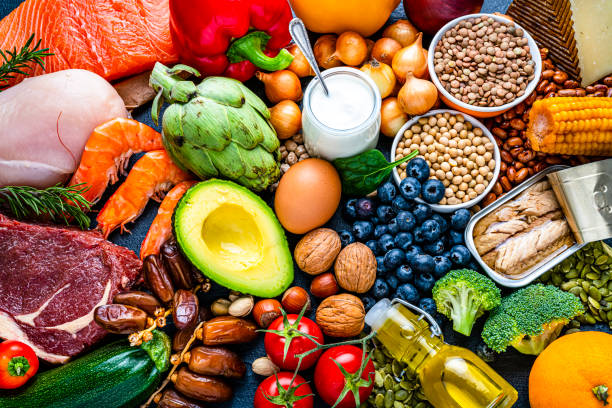Healthy Eating Habits!


Understanding what foods provide to our bodies is essential. Macronutrients like proteins, fats, and carbohydrates are the building blocks of our diet. Proteins help in repairing tissues, fats are vital for energy and cell function, and carbohydrates are our primary energy source. Don’t forget about micronutrients – vitamins and minerals. They play a crucial role in everything from bone health to immune function.
Balanced meals are more than a variety of foods on your plate. Proteins, fats, and carbs should be included in the right proportion. For example, a plate could have a piece of grilled chicken (protein), brown rice (carbs), and steamed broccoli (veggies with fiber). This balanced mix ensures steady energy levels throughout the day.
Hydration often gets overlooked, but it is a cornerstone of a healthy diet. Water aids digestion, helps maintain body temperature, and transports nutrients in the body. It’s advised to drink at least eight 8-ounce glasses of water a day, but your needs might vary based on activity level and climate. Don’t wait until you’re thirsty to take a sip, keep a water bottle handy.
Nutrition labels can be confusing if you don’t know what to look for. Focus on the serving size first; it’s easy to consume more calories than intended if you’re not mindful. Look at the amount of sugars, sodium, and bad fats – keep these numbers low. The ingredient list is also crucial; simpler, whole-food ingredients are better than long lists laden with chemicals.

Developing Sustainable Eating Habits
Planning and prepping meals ahead of time can be a game-changer. Start by making a meal plan for the week, including a variety of healthy ingredients. Prepare meals or at least some components in advance to save time and reduce stress. Batch cooking and storing portions in the freezer can also help keep you on track.
Mindful eating revolves around being fully present during meals. Pay attention to hunger and fullness cues—not just what’s on your plate. Eat slowly, savor each bite, and avoid distractions like TV or phones. This practice can help you enjoy your food more and avoid overeating.
Portion control is critical to maintaining a healthy diet. Use smaller plates and serving utensils to regulate how much you consume. Measuring portions with cups or a food scale can also be helpful. Remember, you’re more likely to succeed if you’re not overly restrictive but instead focus on enjoying every bite.
Your eating environment can significantly influence your habits. Create a positive setting by eating at the table rather than in front of the TV. Surround yourself with supportive friends or family who encourage healthy choices. Even something simple like keeping fruits and veggies at eye level in the fridge can nudge you toward better snack options.
Overcoming Common Dietary Challenges:

Food allergies and sensitivities are becoming more common. Identifying trigger foods can involve a bit of trial and error. Keeping a food diary to track what you eat and how you feel can help pinpoint problematic items. Once you know the culprits, it’s easier to find safe and nutritious alternatives.
Eating healthy doesn’t need to break the bank. Look for seasonal produce, which tends to be cheaper and fresher. Bulk-buying staples like grains, legumes, and nuts can also save money. Don’t overlook frozen fruits and vegetables—often, they are more affordable and just as nutritious as fresh ones.
Emotional eating is another hurdle. It’s easy to turn to food for comfort during stressful times. Instead, find alternative coping mechanisms like exercise, hobbies, or talking to a friend. Being aware of your eating triggers can make it easier to manage them.
Dining out while trying to stay healthy can be challenging, but it’s doable with a bit of planning. Check restaurant menus online beforehand to choose healthier options. Don’t hesitate to ask for modifications, like dressing on the side or grilled instead of fried. Keep portion sizes in check by asking for a to-go box right at the start, splitting meals, or opting for appetizers as a main course.